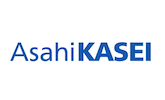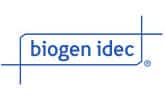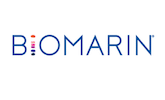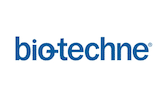Electropolishing for sanitary mixers, agitators, mixtanks, and mechanical seals.
Why EP Mixers and Tanks
- Smoother surface finish, less micro crevices
- Easier to clean
- Remove free iron, corrosion protection
- Considered more sterile
So we electropolish mixtanks to put our best effort forward to make the tank as smooth and crevice free as possible, for a sanitary hygienic surface finish, so the tank can be CIP or SIP and cleaned and sterilized for the best case scenario.
Electropolishing and passivation of sanitary stainless steel parts (mostly 316Lss) is provided by White Mountain Process for biopharma mixers and components. Typical specs we see for mixers and stainless steel mixtanks for biopharma are 15Ra mechanical polish and electropolish for wetted part surface finish. WMPRocess does offer other Ra finishes such as 10Ra and for food/beverage/cosmetic agitators and vessels 32Ra is more common. Passivation and electropolishing are provided as needed and requested, and profilometer surface finish testing and mapping are available options as required.
EP, or electropolishing employs electrical current and chemicals (typically nitric or citric acid) in a controlled electrolytic bath to remove metal burrs and provide a high luster surface finish. This stress free process removes contaminants, passivates the part, and creates an outer layer that retards corrosion.
During the EP-electropolishing process, metal parts (typically 316Lss) are immersed in an electrolytic chemical bath and electrical current is applied at a controlled rate. The electropolishing process removes burrs, weld marks, and can produce a high-luster surface finish down to 5RA, depending on the part configuration.
Electropolishing has become typical for biopharma mixers and tanks, and in the metal finishing industries. Some customers that regularly specify electropolishing for agitated tanks and process components are Aerospace, Biotechnology, Food and Beverage, Medical Device and Surgical, Pharmaceutical, and Semiconductor.
Features of the Electropolishing Process
- Provides a clean, uniform finish
- Removes weld marks
- Superior to passivation
- Aesthetic appeal with a shiny, bright, mirrorlike reflective appearance
- Improve Sterilization on agitators, mixtanks, and bioreactors
- Surface much less resistance to bacteria
- Chemical bond oxide layer resists corrosion for many years
- Improved fatigue life of small components by removing surface impurities
- Causes no hydrogen embrittlement, coatings or residues
The Benefits of Electropolishing
- Removes any free Iron from the surface of stainless steels, this enhances the chromium and nickel content providing dramatically improved corrosion resistance. The improved surface forms a thicker, more uniform oxide layer providing enhanced corrosion resistance properties.
- Electropolish improves the surface chemistry of stainless steel. It removes embedded particles and inclusions,
- Electropolished stainless steel is better suited to resist pitting, corrosion, crevice corrosion, stress corrosion, and microbiologically influenced contamination and corrosion.
- Improves surface smoothness by leveling micro peaks and valleys. This results in easier sterilization by CIP and SIP and maintenance of a clean stainless tank and mixer surface for manufacturing equipment.
- Improved microfinishes can improve sealing surfaces, lower friction for cleaning, reduce real surface area eliminating bug traps, allow for easier sanitation and sterilization.
Summary Of Electropolishing For Agitated Vessels And Bioreactors
As a result, electropolishing provides maximum corrosion resistance in stainless steel. Electropolished stainless steels are better suited to resist the onset of pitting corrosion, crevice corrosion, localized galvanic corrosion, stress corrosion cracking and microbiologically influenced corrosion. Simultaneously removes burrs while parts are polished. Electropolishing facilitates sterilization and maintenance of hygienically clean surfaces. Furthermore, electropolishing reduces the appearance of rouging on the inside surfaces of distillation columns, storage vessels, and distribution systems for hot purified water and clean steam. The most striking benefit of electropolishing is the resulting lustrous surface. Electropolishing is a non-mechanical process. No tools come in contact with the piece so there is no risk of creating directional polishing lines. The material is treated electrochemically, leaving a microscopically smooth surface that is highly lustrous.
Provide The Best Case Scenario For A Smooth Surface Finish So The Mixtank Is Easy To Clean And Sterilize To Avoid Product Contamination.
Typical Electropolishing Standards: ASTM B912, “Standard Specification for Passivation of Stainless Steel Using Electropolishing”
ASME BPE, “Bioprocessing Equipment”
Measurement of mixtank stainless steel surfaces
- The roughness of a surface can be measured by a profilometer. A profilometer is common instrument mixer and tank manufacturers use that measures roughness by moving a diamond tipped stylus across a surface. A profilometer will read surface roughness in micro-inches (µin) typically, or micrometers (µm). Electropolishing may improve a surface finish reading by up to 50%. Electropolishing is not a surface coating, there is no risk of surface distortion or peeling.




























